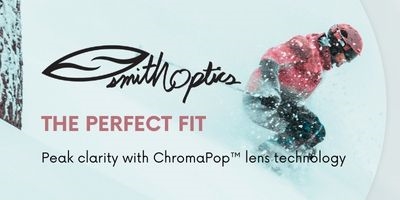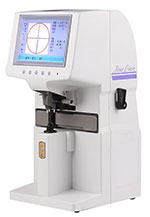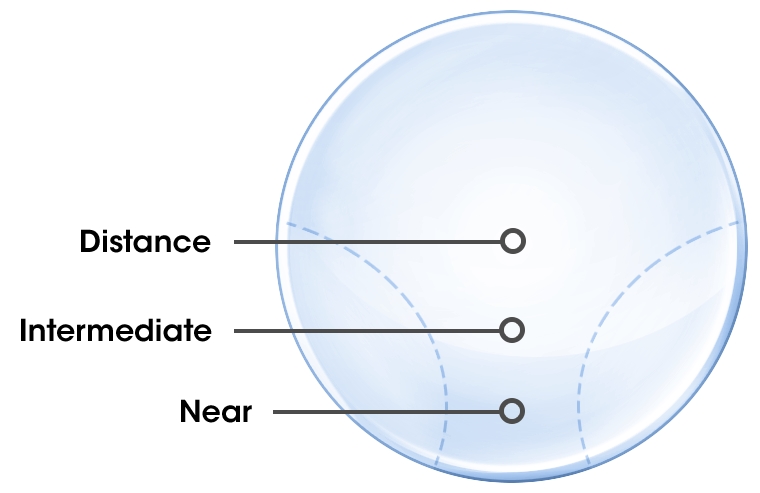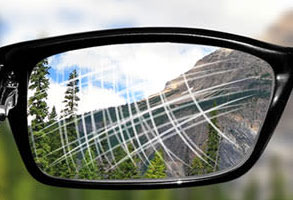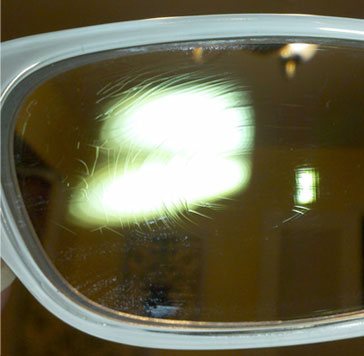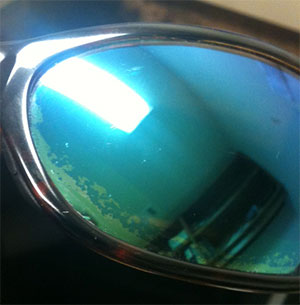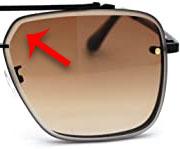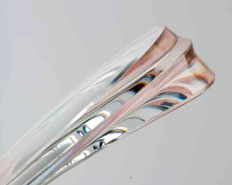Please discontinue use of the prescription lenses if any vision problems are experienced and review the following information.
Vision problems may be experienced with lenses due to a variety of reasons. Some of these reasons include:
- Incorrect Prescription
- Inaccurate Pupil Distance (PD) measurement
- Mispositioned OC height
- Frame base-curve too round
- Unfamiliar Lens Material
- Poor Adaptation
To help narrow down the particular issue, it’s helpful to know if the prescription has been worn successfully before or if it is a new prescription, and if the eye doctor has been consulted.
New Prescriptions
If there are vision problems with a newly prescribed prescription, please consult with the prescribing doctor in case any changes in the prescription are necessary. Any recent changes in the prescription made by the doctor are covered under the Lens Accuracy Guarantee. Once a new prescription or instruction is available and provided by the doctor, a new warranty request may be submitted as explained in the Warranty section.
Existing Prescriptions
If vision problems are being experienced using an existing prescription that has been worn before successfully, it may be due to a variety of issues causing problems. Please contact order support with the issue(s) being experienced for further assistance with troubleshooting the issue. Any recent corrections necessary are covered under the Lens Accuracy Guarantee.
Lens Distortion
Lens distortion may be caused by a variety of issues. But the primary cause of the distortion is due to refractive light. Some common causes of lens distortion are:
- Lens Glare & Stray Light
- Aspheric Design Lenses
- Progressive Lens Edge - Soft-Focus Areas
Adding Anti-Glare Coating is generally recommended to help reduce lens distortion and enhance the overall vision. New lenses without any scratches may be returned for exchange as per the returns policy to have anti-glare coating applied at normal cost.
Progressive Lens Adaptation Issues
Note: First-Time progressive lens wearers require Progressive Lens Training & Adaptation
Poor adaptation to progressive lenses can be caused by a variety of issues. Focusing on the following issues should be considered to help improve adaptation.
| Cause | Details | Solution |
|---|---|---|
| Narrow Frame Height | A narrow frame restricts and reduces the different view fields which can make it more difficult to focus at different distances. | Select frames that have a taller height to expand the distance and reading portion of the lens. Frames and lenses may be exchanged as per the Returns Policy. |
| Distance/Reading segment too Low/High | If the wearer is constantly finding themselves moving the frames up and down to focus on the distance/reading portion, it may be due to the way the sections are positioned in the frame. The Seg Height measurement is used to determine the vertical positioning of the progressive lens in the frames so the distance/reading portion of the lens is not too high or too low. If the Seg Height is not set correctly, it can cause discomfort for the wearer and make the lenses more difficult to use. | Progressive lenses may be remade in a different Seg Height measurement as per the Lens Accuracy Guarantee. The new Seg Height must be provided for the request by the customer or the prescribing doctor for accuracy. Sometimes marking the lens with a marker where the pupil usually rests is sufficient to provide to the lab for a lens re-do request in a new Seg Height. |
| Dizziness or “Going Swimming” | The way the different powers in the progressive lenses graduate between each other may cause dizziness. Additionally, the edge of the lens will not provide vision as clear as the center. | It takes practice and time to let the brain and eye adjust to the different lens powers and to make focusing on the center of the lens a habit. Adding anti-glare coating may reduce edge distortion, but the dizziness feeling is normal when getting acquainted with a new set of progressive lenses. Many higher quality brands offer less distortion and a broader vision range, which makes adapting to progressive lenses easier. Lenses may be exchanged for a different lens brand/design as per the Returns Policy. |
| Unfamiliar Lens Material | Generally for the elderly who are used to wearing lenses in a certain material, may experience some difference in the vision. | It is recommended to stay with the same lens material. Lenses may be exchanged for a different material as per the Returns Policy. |
| Complete Non-Adapt | When the wearer has too much trouble adapting to the progressive lens and finally determines that progressive lenses just aren’t right for them. | Lenses may be changed to standard (lined) bi-focal, tri-focal, or single vision (distance or near) only, as per the Returns Policy. |
Blacked-Out Screens & Monitors
Due to the way polarized lenses function, it may be difficult or impossible to read computer screens or monitors with polarized lenses. If reading computer screens with sun lenses are desired, consider a non-polarized tint option.




